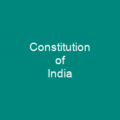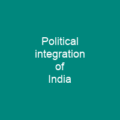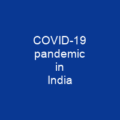India: A Land of Vast Diversity and Endless Possibilities
The Enigma of India
Imagine a country that is both ancient and modern, a land where the past whispers through the streets while the future buzzes with innovation. Welcome to India, officially the Republic of India, a nation that spans over 3.287 million square kilometers—making it the seventh-largest country by area. With a population of approximately 1.4 billion people, it is the most populous democracy in the world and has been since its independence from British rule in 1947.
Geography and Biodiversity
Bounded by several countries including Pakistan, China, Nepal, Bhutan, Bangladesh, and Myanmar, India shares maritime borders with Thailand, Myanmar, Indonesia, Sri Lanka, and the Maldives. Its diverse geography includes the Himalayas, the Indo-Gangetic Plain, and the Indian Plate, creating a landscape that is as varied as it is breathtaking.
India’s rich biodiversity is another testament to its natural beauty. Home to 8.6% of all mammal species, 13.7% of bird species, and 6% of flowering plant species, India hosts four major biodiversity hotspots. The country has over 500 wildlife sanctuaries and 18 biosphere reserves, with more than 75 wetlands registered under the Ramsar Convention.
History: A Tapestry of Cultures
First Modern Humans Arrived 55,000 Years Ago
Modern humans arrived on the Indian subcontinent from Africa around 55,000 years ago. Their long occupation as hunter-gatherers made the region highly diverse, second only to Africa in human genetic diversity.
The Indus Valley Civilization and Beyond
The Indus Valley Civilization, which emerged around 9,000 years ago, laid the foundation for a rich cultural heritage. This was followed by the rise of Hinduism, Buddhism, and Jainism, with the Maurya and Gupta Empires giving rise to early political consolidations.
India’s history is a tapestry woven from many threads: the Vedic culture that emerged during 2000–500 BCE; the caste system that arose during this period; the consolidation of regions into mahajanapadas in the late Vedic period (6th century BCE); and the emergence of non-Vedic religious movements, including Jainism and Buddhism.
The Maurya Empire, with Ashoka’s renunciation of militarism and advocacy of Buddhist dhamma, further shaped India’s political and cultural landscape. The Gupta Empire created a complex system of administration and taxation in the Ganges Plain, setting the stage for the Indian early medieval age (600-1200 CE).
Colonial Rule and Independence
The British East India Company established colonial rule over much of India by the 19th century. The British Crown took over in 1858, introducing technological changes and modern ideas. A nationalist movement emerged, notable for nonviolent resistance, leading to the end of British rule.
India became a federal republic in 1950, governed through a democratic parliamentary system. It is a pluralistic, multilingual, and multi-ethnic society with a rich tapestry of cultures and traditions.
Economy: A Rising Star
A GDP of $3 Trillion and Growing
India’s economy has been growing steadily over the years. With a GDP of $3 trillion, ranking third-largest by purchasing power parity (PPP), India is expected to grow at an annualized average of 8% until 2050. Key growth factors include a young and rapidly growing working-age population, growth in manufacturing due to rising education and engineering skill levels, and sustained growth of the consumer market driven by a rapidly growing middle-class.
The telecommunication industry is the second-largest in the world with over 1.2 billion subscribers, contributing 6.5% to India’s GDP. The Indian automotive industry is the world’s second-fastest-growing, while the IT industry employs 2.8 million professionals and generated revenues close to $100 billion.
The pharmaceutical industry in India emerged as a global player, producing 3000 pharmaceutical companies, 10,500 manufacturing units, and supplying up to 50-60% of global vaccines demand. The Indian biotech industry grew by 15.1% in 2012-2013.
Culture: A Melting Pot of Traditions
Visual Art and Architecture
Indian art has an ancient tradition, influenced by Eurasian cultures, particularly Buddhist art which spread to Central, East, and Southeast Asia. The earliest surviving seals date back to the Indus Valley Civilization. Indian architecture blended local traditions with imported styles, influenced by Vastu shastra and Shilpa Shastras.
The Taj Mahal, built between 1631 and 1648, is a UNESCO World Heritage site that stands as a testament to India’s architectural prowess.
Conclusion
India, with its rich history, diverse culture, and vibrant economy, continues to captivate the world. From its ancient civilizations to its modern innovations, this land of contrasts offers endless possibilities for exploration and discovery. As it strides towards a brighter future, India remains a beacon of hope and progress.

You want to know more about India?
This page is based on the article India published in Wikipedia (retrieved on March 1, 2025) and was automatically summarized using artificial intelligence.







